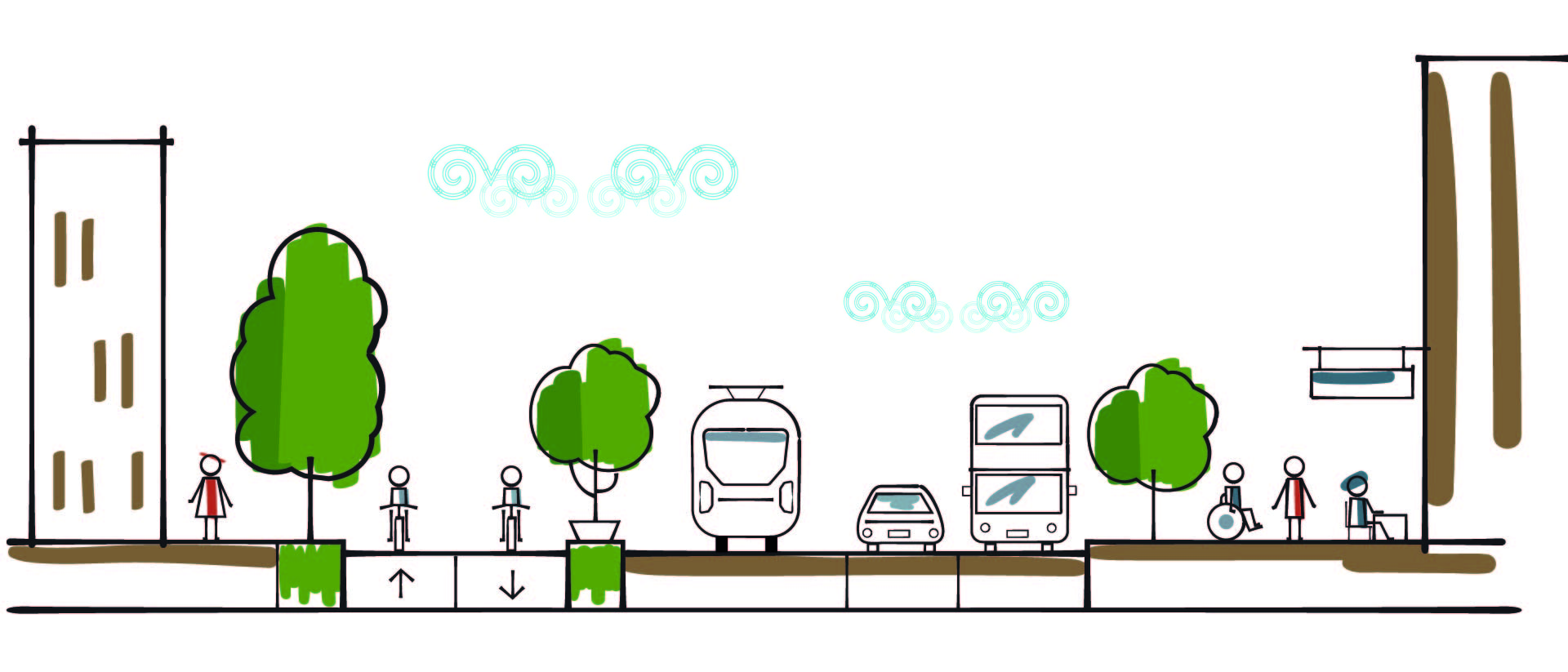Why this is a priority
Transport-related emissions accounted for about 44 per cent of Auckland’s total emissions in 2016. About 86 per cent of these are related to travel by road.
Between 2007 and 2017, on-road transport emissions increased by about 9 per cent.
We need to make fundamental shifts to how we power our personal travel, how we transport freight and how much we travel.
Reducing emissions and building resilient transport systems also delivers wider benefits such as:
- improved public health
- better water quality
- equity and social justice
- longer-term economic resilience.
We will all need to make big changes to achieve our goal of reducing our emissions by 50 per cent by 2030.
This priority focuses on how we can do this while making sure that Auckland grows as a great, inclusive place to live.

Changes we need to make
Our overall emissions profile relates to the carbon-intensity of the energy we use to power our vehicles, the lifecycle of those vehicles and the consequences of operating them, including wear-and-tear of infrastructure assets.
While there are many potential pathways to our goal, we need to make significant changes to:
- how and where we live
- how we conduct and power our personal travel
- how we transport our freight
- how much we travel
- how we grow as a region.
How we travel and how much we travel inter-regionally matters as well, with domestic flights accounting for about five per cent of our transport emissions.
We also need to be smarter in placing and protecting new assets to ensure they are resilient and be innovative in how we maintain our infrastructure, to lower embodied emissions.
Land use and growth are addressed under our Built environment priority.
Light vehicle travel
The highest priority is reducing emissions generated by light passenger vehicles and commercial vehicles, given these generate about 80 per cent of on-road emissions.
Between 2009 and 2019, the amount and type of private travel we each undertook remained relatively stable. Meanwhile, we welcomed about 220,000 new Aucklanders with travel demands of their own.
Another trend that contributes to emissions is that many of our short trips are undertaken by private vehicles, while the number of people per vehicle has decreased over time. A large proportion of these trips could be by walking or cycling.
Slow uptake of fuel-efficient vehicles has also been affected by a lack of regulation influencing decision making and a high purchase price of electric vehicles.
Heavy vehicle travel
Heavy vehicle movements have increased substantially over recent years. This generates a disproportionately high share of emissions per kilometre travelled because of the engine sizes and loads they carry. Heavy vehicles account for about 20 per cent of on-road emissions.
About 95 per cent of Auckland’s intraregional freight movements and the great majority of interregional movements are by road.
Read about roles and partnerships to deliver our actions and the indicators that track our progress for transport priority.
